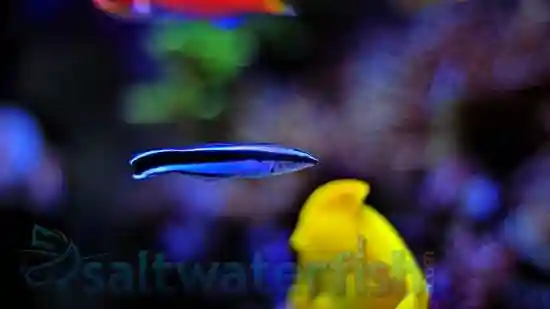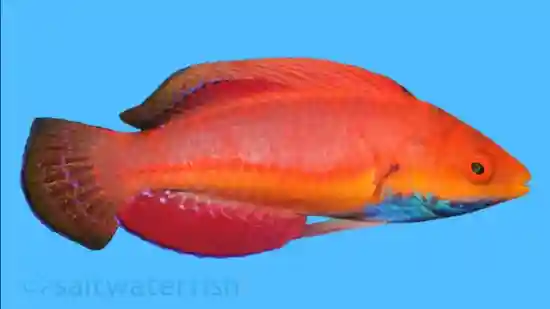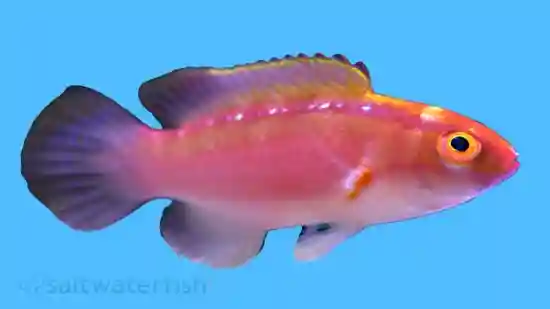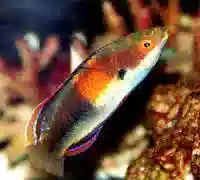Cleaner Wrasse
Labroides dimidiatus
(0 Reviews)

Cleaner Wrasse
Labroides dimidiatus
(0 Reviews)
{{ item.name }}
Size: {{ item.extra_field_3 }}
${{ getFormattedPrice(item.saleprice) }} ${{ getFormattedPrice(item.price) }}
To join the waiting list, click here
Free Shipping
With
$199.00
or more in Marine Life.
More details...
Cleaner Wrasse Care Facts
| Care Level: | Moderate |
|---|---|
| Temperament: | Peaceful |
| Diet: | Carnivore |
| Reef Safe: | Yes |
| Minimum Tank Size: | 50 Gallons |
| Max Size: | 5 inches |
The Helpful Cleaner Wrasse (Labroides dimidiatus): A Valuable Asset for Saltwater Aquariums
The Helpful Cleaner Wrasse (Labroides dimidiatus) is a fascinating and beneficial species that adds charm and utility to saltwater aquariums. Known for its vibrant colors and unique behavior, this wrasse species has become a sought-after choice among marine enthusiasts. Let's explore the Cleaner Wrasse's habitat, reef-safe nature, size, lifespan, diet, aquaculture options, compatibility, cleaning activity, suitable tank mates, tank requirements, other common names, and compatible tank mates.
Habitat of the Cleaner Wrasse
The Cleaner Wrasse is commonly found in the tropical waters of the Indo-Pacific region, including the Red Sea and the western and central Pacific Ocean. In the wild, they inhabit coral reefs and rocky areas with ample hiding spots and cleaning stations.
Reef-Safe Nature of the Cleaner Wrasse
The Cleaner Wrasse is entirely reef-safe and poses no threat to corals or other invertebrates. On the contrary, they play a crucial role in maintaining the health of the reef ecosystem by removing parasites and dead skin from the bodies of larger fish.
Size and Lifespan of the Cleaner Wrasse
Cleaner Wrasse are relatively small, typically reaching lengths of about 5 inches. With proper care, they can have a lifespan of up to six years in a well-maintained aquarium.
Diet and Feeding Habits of the Cleaner Wrasse
In their natural habitat, Cleaner Wrasse are specialized cleaners, feeding on parasites, dead skin, and mucus from the bodies of other fish. In a home aquarium, they will accept a varied diet consisting of high-quality frozen and live foods such as brine shrimp, mysis shrimp, and marine pellets.
Aquaculture Options for the Cleaner Wrasse
The Cleaner Wrasse is available in the aquarium trade, but captive-bred specimens are less common than wild-caught individuals. Breeding and rearing them in captivity can be challenging, so aquaculture options for this species are limited.
Compatibility of the Cleaner Wrasse
Cleaner Wrasse are generally peaceful and sociable, making them compatible with many tank mates. However, they may be aggressive towards other wrasse species or fish with similar body shapes, as they see them as potential competitors for their cleaning services.
Cleaning Activity of the Cleaner Wrasse
In the aquarium, Cleaner Wrasse will often set up cleaning stations where larger fish visit to have parasites and dead skin removed. This unique and beneficial behavior is fascinating to observe and enhances the overall health of the tank's inhabitants.
Suitable Tank Mates for the Cleaner Wrasse
- Peaceful gobies (e.g., watchman or neon gobies) for a dynamic and captivating display.
- Firefish (Nemateleotris magnifica) share a compatible tank environment with the Cleaner Wrasse.
- Certain species of cardinalfish are compatible tank mates that add diversity and activity to the aquarium.
- Some species of blennies are suitable tank mates that add personality and character to the tank.
- Certain species of damsels can coexist with the Cleaner Wrasse in a larger aquarium.
In conclusion, the Helpful Cleaner Wrasse (Labroides dimidiatus) is a valuable and engaging asset for saltwater aquariums. Its unique behavior as a cleaner and compatibility with various tank mates make it a popular choice among marine enthusiasts. Aquarists can enjoy the beauty and usefulness of these remarkable wrasses in their aquariums by providing them with a suitable environment, compatible tank mates, and proper care.
Great fish came in ready to go!
Reviewed by: Jamie Strickland on Feb. 2, 2025
Came in lathargic ... actually thought we lost him ... drip acclimated rather than bag and he came back ... placed in tank and he was off from there. Also much larger than expected ... great fish ... cool attitude ...
Reviewed by: Scott Holmes on Aug. 14, 2024















